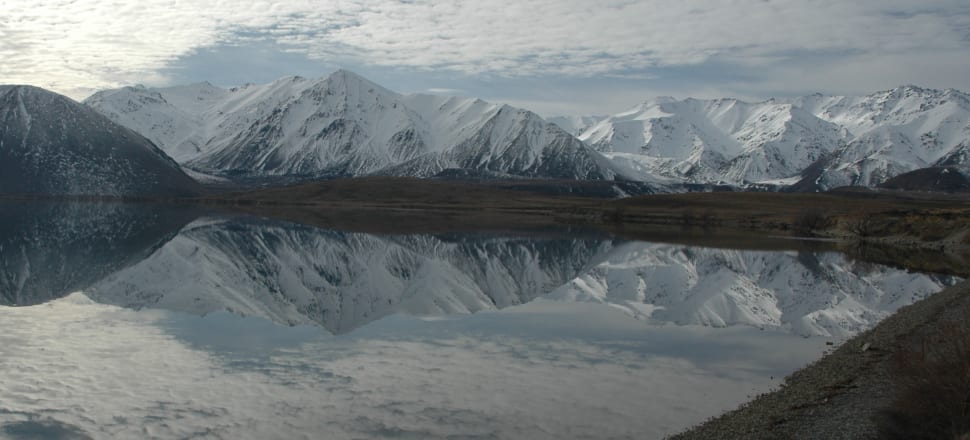
Canterbury’s regional council was urged to act quickly two years ago to save lakes
Several sensitive Canterbury lakes will "die" without urgent intervention by the regional council, a former chair of Fish & Game says.
Ray Grubb’s comments come as an environmental group asks the council, ECan, to review farm consents near the lakes in a bid to halt their decline.
READ MORE: * Ngāi Tahu unleashes over lakes * ‘Damning’ govt report lays out freshwater failures
In May, the Ministry for the Environment published a report on Ōtūwharekai/Ashburton Lakes which found the freshwater management system failed to protect the network of wetlands and small-to-medium-sized high country lakes.
"Despite endeavours to support lake health since 2007, the lakes show increased evidence of eutrophication [nutrient enrichment]," said the Lessons Learnt report.
"Once a lake becomes highly eutrophic, restoration to a healthier trophic state is difficult and costly."
Environmental groups called the report damning, and evidence of systemic failure by multiple agencies.
Ngāi Tahu’s feedback to the Ministry for the Environment was a searing account of inaction and cultural undermining.
Grubb, who lives in Nelson, worries Ōtūwharekai is heading in the same direction as Waikato’s toxic Lake Waikare.
“I’ve been desperately concerned that two of the lakes, possibly three, will die within the next year, unless there is immediate and significant action,” he says.
“The single-biggest problem is that ECan’s rules have allowed this to occur; their rules are deficient.”
ECan included so-called sensitive lake zones – with special rules for farming and nutrient loss – in its land and water plan in 2012.
But the ministry report said the plan didn’t protect the lakes. While, according to the plan, the lakes’ naturalness must be maintained or improved, the direct pressures on them – like land use, stock numbers, and intensive farming – weren’t adequately managed.
ECan’s director of science Dr Tim Davie agrees: “It has since become clear those rules were not tight enough to lower the nutrient losses, and achieve the defined lake outcomes.”
Practical failures include setting farms’ nitrogen loss baseline limit too high, and the inadequacy of nutrient management tool Overseer, which, through averaging, allowed leaching hotspots near the lakes.
In May, Corina Jordan, Fish & Game’s chief executive, said none of the lakes met the so-called trophic level index score between 2017 and 2021, and some failed to meet national bottom lines.
The best way to protect the sensitive natural environments was a return to extensive, sheep-based farming systems, she said.
Grubb says the four farm stations around the lakes – Mt Possession, Mt Arrowsmith, Castleridge and Lake Heron – have done nothing wrong.
“They’ve actually done what they think they’re allowed to do under the ECan rules.”
Requests to the farm stations for comment went unanswered.
In May, Colin Hurst, Federated Farmers’ spokesperson for water quality, said individual farms in the Ashburton Lakes had made significant investments over many years. “Examples include: stock water reticulation, fencing of streams and wetlands and changing stock management practices.”
Meanwhile, last month the Environmental Defence Society wrote to ECan chair Peter Scott to request the council review the Ōtūwharekai consents. Such a review can take place in November, EDS chief executive Gary Taylor said, but ECan should start working on it now.
ECan’s Davie says: “In addition to working directly with farmers on voluntary measures, we are also assessing regulatory options for in this catchment, including those related to consents, the monitoring of permitted activities, and NES [national environmental standards] requirements.”
Davie takes issue with Grubb’s characterisation of the risks, saying lakes only “die” when they fill completely with sediment and cease to exist.
“The Ōtūwharekai Lakes are degraded but still have the ability to improve, and for biodiversity, cultural and recreational values to recover. We are working to ensure that improvement happens.”
Evidence builds
As chair of Fish & Game, (a role he resigned from last year amid bullying allegations), Grubb was sent a joint ECan-Department of Conservation assessment of the Ashburton Lakes, from June 2021, based on a scientific report by independent research institute, Cawthron.
The Cawthron report, an update of modelling done in 2014, was further evidence all monitored lakes in Ōtūwharekai needed “significant catchment nutrient load reductions” to meet objectives and limits in the regional land and water plan.
This was already evident from stream and lake monitoring done by ECan and DoC.
Increasing nutrient trends, leading to large increases in algal biomass, were especially evident in Lakes Heron/O Tu Roto and Clearwater/Te Puna-a-Taka, the ECan-DoC assessment said.
“Urgent action is needed for Lake Clearwater in particular as there are indications that the lake may be ‘tipping’ (ie. transitioning from a clear, macrophyte-dominated state to a turbid, algae-dominated state).”
A bolded section of the assessment said: “Lakes are often accumulators of nutrients and legacy issues can persist for years after external nutrient loads are reduced. Degradation is not readily reversible; especially once lakes have reached their ‘tipping points’.
“Climate change is likely to further increase the lakes’ vulnerability. These considerations highlight the need for substantial and urgent action to prevent the Ashburton lakes from entering into (or remaining in) persistent, degraded states.”
Grubb, the former Fish & Game chair, says: “We’ve got a two-year-old report ... which says that these lakes are going to die unless something is done urgently.”
Asked about ECan’s “substantial and urgent action” over the past two years, Davie says the council has engaged directly with landowners to voluntarily reduce nutrients, and developed lake-by-lake management plans with members of the Ōtūwharekai Working Group, established in 2019.

Davie says none of the Ōtūwharekai lakes have flipped to a turbid, algae-dominated state, as was feared.
The clarity of Clearwater has improved substantially since 2021 and he says the immediate danger of the lake flipping seems to have passed.
“However, we are concerned about the state of nearby O Tu Roto/Lake Heron, which has continued to increase in algae and turbidity.”
Farms in the area are non-intensive dry stock sheep and beef/deer farms, with no dairy farming, irrigation or stock holding, he says.
A “non-statutory” approach initiated in 2021 has included:
The voluntary relocation of winter grazing to lower-risk areas;
Ongoing stock exclusion measures through fencing waterways, running sheep-only grazing blocks, and full retirement of some designated land;
Deep soil nitrate testing to get accurate leaching on targeted paddocks;
Using catch-cropping when undertaking winter forage grazing.
This hasn’t been backed up by nutrient load modelling; Davie says no new data has been produced since the 2021 report. However, the reduction in nutrient loads needed to meet the land and water plan has been re-calculated.
Davie: “Since 2021, we can say that the movement of intensive winter grazing out of catchment has resulted in a removal of around 10 tonnes of nitrogen from the Front Māori Lake catchment.”
Extra research and monitoring has also been done.
“This is a case where the landowners aren’t the bad guys but there’s bad stuff happening.” – Gary Taylor, Environmental Defence Society
A 2019 Department of Conservation report to Ashburton’s water zone committee made several recommendations, most of which, Davie says, are in progress.
“We have noticed some positive trends – like the reduction in algal biomass in Te Puna-a-Taka/Lake Clearwater, and an increase in water clarity over the past two years – but overall we are still very concerned about lake health.”
Planning reviews are underway.
“We aim to notify a reviewed regional policy statement and targeted changes to the land and water regional plan in late 2024,” Davie says. “A hearing process will follow.”
As previously mentioned, Environmental Defence Society has asked for Ōtūwharekai farm consents to be reviewed in November this year. (Only two of the four farms have current consents.)
A review of consent conditions might begin to relieve some immediate pressure on the lakes, said Gary Taylor, the society's chief executive, in his letter to ECan.
Taylor tells Newsroom: “Most of the farmers have been compliant with what have proven to be inadequate regulatory settings. I think any rapid imposition of tighter regulatory controls, or consent conditions, might need to be accompanied with financial support.
“This is a case where the landowners aren’t the bad guys but there’s bad stuff happening.”
Marnie Prickett is a research fellow at the Department of Public Health, University of Otago, Wellington.
She’s concerned ECan has a continued emphasis on existing processes – which have failed – to achieve lake health.
Davie says all farm stations in the area have undertaken mitigations over and above A-grade audit standards required in farm environment plans.
But, asks Prickett, what use is an A-grade audit when lakes continue to degrade? “The grading system seems to have obscured the need for significant change.”
She says ECan should consider banning intensive winter grazing from the catchment, rather than shifting it, given the practice leads to high losses of nitrogen, phosphorus, sediment, and pathogens.
Lake-by-lake action plans need to have measurable milestones, clear responsibilities, and triggers for action if milestones aren’t met, Prickett says.
“ECan’s comments suggest that they are yet to fully accept their responsibility for and role in the decline of the lakes’ health, which means they could continue to fail the lakes and the wider community.”
The regional council needs to “deeply reckon” with past mistakes and change its approach, she says.
“It can do this in its upcoming, next-generation regional plan, but it needs some courageous self-reflection and determination.”







